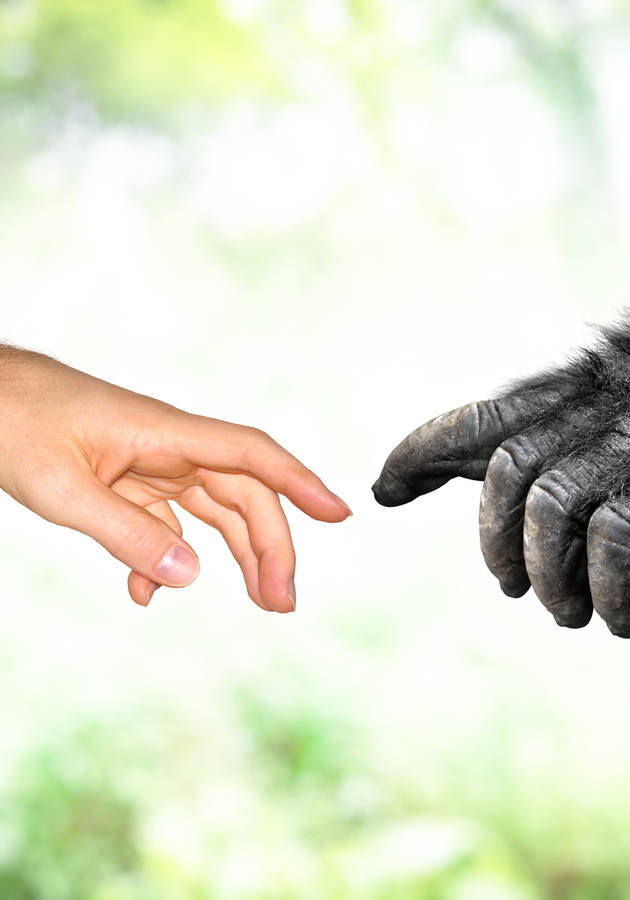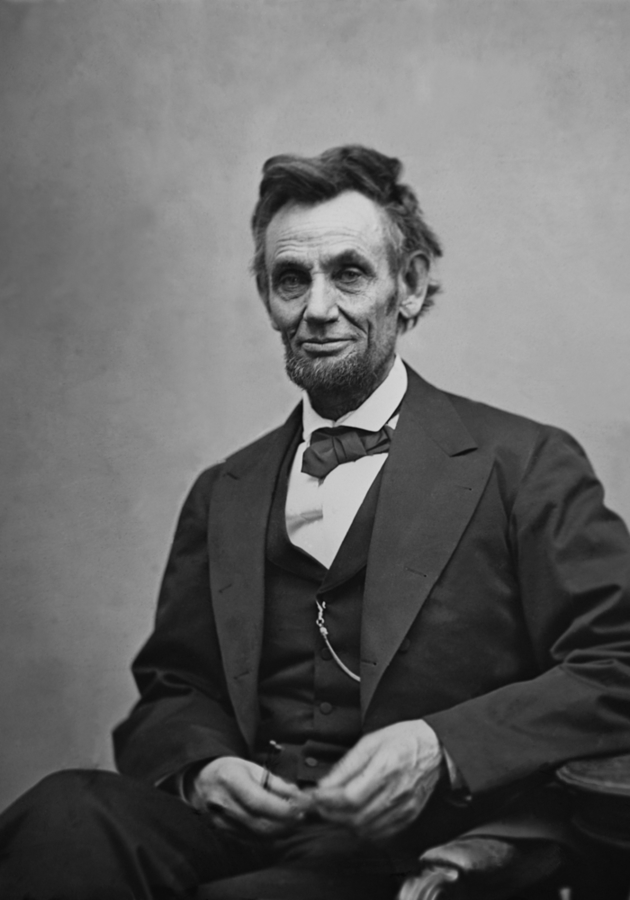We all want certainty, stability and tranquility in life. In “Antifragile,” Nassim Nicholas Taleb – one of the foremost thinkers of our age – makes all of these things undesirable, advocating instead for randomness, volatility and disorder. Get ready to discover why.
Damocles, Phoenix, and Hydra
According to a Roman retelling of a Greek myth, Damocles was a fawning courtier in the court of the Sicilian tyrant Dionysius II, envious of the high life the king seemed to be leading. One day, in an attempt to teach him a lesson, Dionysius allowed Damocles to sit on his throne and enjoy all of his riches. However, in the midst of the fancy banquet, to convey the sense of constant fear in which men of great power live, Dionysus suspended a sword above Damocles’ head, tying it to the ceiling with a single hair from a horse’s tail. Aware that a horse’s hair will eventually break under pressure, Damocles stopped enjoying the beauty around him. Before too long, he begged Dionysus to demote him. “Damocles is fragile,” comments Taleb, “it is only a matter of time before the sword strikes him down.”
In another ancient legend, we find the Phoenix, a splendid-colored, long-lived bird with the ability to cyclically regenerate. According to various stories, only one phoenix existed at any time and it had a life span of about 500 years. When this period would draw to a close, the bird would fashion a nest of aromatic boughs and would set it on fire, yielding up its life. However, from the ashes of the old phoenix, a new phoenix would miraculously arise. The phoenix is robust: no matter how hard the blow, it cannot be knocked out. It always returns to its initial state.
Our final mythological metaphor concerns the Hydra, a serpent-like creature dwelling in the lake of Lerna, near Argos. According to ancient Greek poets, the Hydra had many heads, as few as three as reported by some or as many as 50 as per other sources. The discrepancy may stem from an interesting property of the Hydra, mentioned first by the tragedian Euripides. Supposedly, the monster could grow back a pair of heads each time one of the original ones was cut off. More than just being able to get back on its feet after being knocked out, the Hydra actually profited from this type of harmful event. She owned something beyond the robustness of the phoenix. Before Taleb, we didn’t have a word for it. Now we do: antifragility.
The triad: fragility, robustness and antifragility
“Some things benefit from shocks,” writes Taleb. “They thrive and grow when exposed to volatility, randomness, disorder and stressors, and love adventure, risk, and uncertainty.” Fragile things, such as Damocles, abhor shocks for fear of being annihilated by them. Robust things, such as the phoenix, resist shocks and stay the same after enduring them. Antifragile things, such as the Hydra, get better not in spite of shocks, but because of them.
If you send a package full of champagne glasses to a cousin in Siberia, you’ll ask the post office to stamp it with “fragile: handle with care.” If there was something unbreakable inside – say, a pack of tungsten rings or an old Nokia phone – you wouldn’t bother writing anything on the box. However, if you were sending someone an antifragile item, it would be best to label it with “please mishandle” or “please handle carelessly.” The robust package would be both at best and at worst unharmed; the fragile package would be at best unharmed; the antifragile package, quite counterintuitively, would be at worst unharmed.
To better understand the fragile-robust-antifragile triad, think about your immune system. Your innate immunity is a characteristically robust system which works fine on its own: immediately after an attack, it provides a non-specific maximal response. However, it doesn’t have immunological memory, which means that it always stays the same, reacting in the same generic manner to all foreign invaders. Since pathogens evolve and we constantly face newer and newer threats, this strategy is not the optimal approach for the well-being of complex organisms such as humans. That’s why most vertebrate animals have evolved a second layer of protection: adaptive immunity.
Your adaptive immunity is an antifragile system. It provides specialized protection against pathogens and has immunological memory, meaning it can remember previous attackers and respond rapidly upon secondary exposure. However, your adaptive system can only improve and get better at overcoming illnesses by being subjected to various pathogens – germs and microbes – in low and limited doses; in fact, that’s pretty much how vaccines work. The earlier these interactions occur, the better it is for your overall health.
Unfortunately, some parents nowadays don’t understand this, so they tend to oversterilize the environments of their children. That way, inadvertently, they “fragilize” the adaptive immune systems of their children. The Ancient Greeks had a word for this: iatrogenesis. It can be translated as “(harm) caused by the healer.”
What kills me makes others stronger
The antifragile property is the driving mechanism of everything that changes with time, from evolution, culture, and good recipes to political institutions, technological innovations and bacterial resistance. In all of these cases, the systems grow from disorder and thrive in volatile environments. Although shocks may damage and even destroy parts of them, the system, as a whole, progresses and becomes better.
That is, perhaps, the most interesting aspect of antifragile systems: they can only be antifragile because their constituent parts are fragile. Take evolution, for example. It only works, as Taleb writes, because of its antifragility: “It is in love with stressors, randomness, uncertainty, and disorder: while individual organisms are relatively fragile, the gene pool takes advantage of shocks to enhance its fitness.”
The same holds true for the market as well. The failure of a startup is, of course, bad for the owner of that startup, but it is great for the market as a whole because others can learn from the mistake and avoid it. “The fragility of every startup,” explains Taleb, “is necessary for the economy to be antifragile, and that’s what makes, among other things, entrepreneurship work: the fragility of individual entrepreneurs and their necessarily high failure rate.” That’s why, in Taleb’s opinion, we should treat ruined entrepreneurs pretty much like we treat dead soldiers. For there is no such thing as a failed entrepreneur: it is thanks to them that economic growth is possible. They are the source of our antifragility.
As can be easily deduced from the two examples, in many cases, someone has to pay a price for an antifragile system to improve. It’s unethical to conclude from there, with some “right-wingers-in-love-with-large-corporations,” that it is always best not to meddle with the forces of the market. Because for us to evolve as much as we have, many weaker humans had to die before us. We are, however, currently at a point in history where allowing the weaker to die for the system to prosper is beyond reprehensible. As Taleb says, we can “tolerate some inefficiency, some fragility, in order to protect individuals.” No individual needs to starve to death in the name of overall progress.
The denial of antifragility and the Soviet-Harvard delusion
We’ve covered a lot of ground, so allow us a paragraph to recap everything before we move on. In order to improve the biosphere as a whole, evolution needs some ill-adjusted organisms – and many more ill-adjusted genes – to perish into oblivion. Just as well, for the economy to be antifragile, “every single individual business must necessarily be fragile, exposed to breaking.” As much as it is painful to think, in the words of Taleb, ruthlessness is “an engine of improvement.” Quite conversely, if you strip a system of its volatility, randomness and harmful stressors, the system weakens, dies, or blows up.
If you lie in bed for a month doing nothing else, your muscles will atrophy and your strength will decrease by as much as 20 to 30%. Lie some more and you will probably develop bedsores, anxiety, and even type II diabetes. Similarly, if a mother overprotects her daughter from painful and dangerous experiences in her childhood, one day, when they inevitably arrive, the daughter will be too fragile to face them. Out of tranquility sprouts the fragile; the antifragile grows from volatility and disorder.
The tragedy of modernity, according to Taleb, is that it has gotten this timeproof lesson quite backward. Instead of allowing volatility to strengthen the systems, it tries maniacally to suppress it, thereby fragilizing everything from education to the economy. That brings us to the so-called fragilistas, people who overestimate the reach of scientific knowledge and are confident enough to meddle with what they don’t really understand. An example of a fragilista is the soccer mom who doesn’t allow her son to play in the dirt and, thus, hinders the development of his immune system. An even worse example is the policy fragilista, i.e., the interventionist social planner, who introduces policies and actions that have small and immediately visible benefits and potentially severe side-effects in the long run.
Both the soccer mom and the social planner are guilty of imposing tranquility upon a chaotic, complex system and thereby depriving it from the volatility necessary for such systems to become antifragile. In Taleb’s parlance, they have both fallen for the Soviet-Harvard delusion, “the (unscientific) overestimation of the reach of scientific knowledge.” In plainer words, they are naïve rationalists who treat complex systems like washing machines – that is, like simple products with predictable mechanical responses that can be easily decoded in the detailed user manuals. Needless to add, the writers and interpreters of these manuals are, once again, they: the fragilistas.
On the subject of turkeys, tourists, butchers and black swans
For the sake of their “comfort, convenience, and efficiency,” the fragilistas of the world “touristify” life, depriving it of adventures, chance and randomness and converting everything into a prearranged script. However, real life is not predictable. In fact, few things are. No matter how much knowledge you can derive from the past, the future will still surprise you. And when it does, precisely those who feel to be prepared the most will be the ones able to overcome the disaster the least. They will become victims of their overconfidence.
To understand this better, imagine a turkey being fed by a butcher for a period of a thousand days. Now, imagine an alien – preferably a Star Trek Vulcan – observing the situation analytically. He has no idea of the identity of any of the species, so every single day he’s getting more and more certain that butchers love turkeys. But then, one Thanksgiving, the butcher will stop feeding the turkey and will instead kill it. In other words, at the exact moment when the confidence in the statement that “the butcher loves turkeys” is at its maximum, the belief will have to be revised. But, by then, it will be too late.
In the story, Thanksgiving is a Black Swan event – that is, an unprecedented event with severe consequences. Naïve rationalists such as the alien-observer – as well as human systems who “fear and thirst for order” – are exposed to serious harm from Black Swan events. The more confident the turkey is that the butcher loves her, the less prepared she will be for Thanksgiving. Once again, overconfidence leads to fragility. “So, our mission in life,” comments Taleb, “becomes simply ‘how not to be a turkey,’ or, if possible, how to be a turkey in reverse – antifragile, that is.”
Antifragility at other people’s expenses
“Not being a turkey,” according to Taleb, starts with figuring out the difference between true and manufactured stability. By now, you should be able to figure out the difference yourself: true stability is, paradoxically, a long-term product of constant small shocks, while manufactured stability is a temporary consequence of man-made ironing of randomness.
About a century ago, Vladimir Ilyich Lenin tried to smooth out the randomness of the market by centralizing the economy of the newly-formed Soviet Union. By doing this, he acted as a naïve rationalist, a tourist, a fragilista. By robbing the economy of the minor shocks and stressors it needed to adjust in step, Lenin made it more susceptible to future Black Swan events. Swept under the rug, the mistakes multiplied over the decades and exploded in a cataclysmic series of events in the early 1990s, bringing about the collapse of the Soviet Union.
Lenin did something a few people were allowed to do in the past, but many policy makers regularly do today: he transferred the antifragility of the system to the ones who least understand its complexity. He was the one making all the decisions, but he was not the one suffering the consequences of the eventual failures; to make matters worse, he even benefitted from them. There are many Lenins around today. “At no point in history,” bemoans Taleb, “have so many non-risk-takers, that is, those with no personal exposure, exerted so much control.”
Robert Rubin, the 70th United States secretary of the treasury, is a good example – or, rather, a very bad one (Taleb says that he “represents everything that’s bad in America.”) In the years before the financial crisis of 2007-08, Rubin served as director and senior counselor of Citibank. During his decade-long tenure, he received more than $120 million in cash and stock from the bank, thanks to his supposedly good advice. The numbers were indeed nice for a while, but then they weren’t at all. However, by then, Rubin had resigned from the company, so he got to keep his money. To add salt to the wound, a large part of his bonuses was funded by hardworking American taxpayers, since the government took over the bank’s losses, deeming Citigroup “too big to fail.”
Skin in the game and the hidden asymmetries of modernity
The story of Robert Rubin brings us to one of the most important concepts in Taleb’s philosophy, the one he describes as “the largest fragilizer of society” and “the greatest generator of crises”: the absence of “skin in the game.”
If Robert Rubin had lived in medieval Catalonia, he would have been beheaded for his actions right in front of the entrance of Citibank. Most traditional societies had similar laws. Unlike modern societies, they were very aware of possible transfers of antifragility to individuals at the expense of the collective and did their best to reestablish the symmetries of rewards and punishments.
For example, the very first legal code in history, the Code of Hammurabi, orders that if a house collapses and causes the death of the owner, then the builder of the house must be put to death. The law acts as a corrective of an inherent asymmetry: it forces the builder to have “skin in the game.” The goal, of course, is not to retroactively punish him, but to incentivize him to save lives by being good at his profession.
Hammurabi’s code is very simple. Modern life isn’t. Or, at least, that’s what our antiheroes – the bankers, the bureaucrats, the politicians, the consultants, the suited executives and many other transferrers of antifragility – would have you believe. They need you to think that life is complex so they can easily hide the fact that they are, in fact, dispensable.
Older societies celebrated real-life heroes, that is to say, bold individuals willing to put not just their skin but also their soul in the game. These heroes – be they artists or philosophers, maverick scientists or knights – went beyond taking the risk and keeping their own downside: they were willing to take the downside on behalf of others, to sacrifice their own being for the sake of their community and even humanity in general. Our modern-world heroes, on the other hand, are heroes in the abstract. They are tourists and fragilistas, individuals with no skin in the game, people who benefit from the risks other people take.
Antifragile strategies for societies
To make the antiheroes of the world fragile – and, thus, make societies antifragile once again – we need to wipe away the reward/punishment asymmetry introduced by modernity. Moreover, we need to reorganize our societies in such a way that they would profit from shocks and random events, and not be destroyed by them. Here are just a few strategies:
- We need to seek simplicity. A complex system doesn’t require intricate policies. Quite the opposite, intricate policies lead to “multiplicative chains of unanticipated effects.” The less you meddle with a complex system, the better. Just as well, the less sophistication a profession needs to justify itself, the more necessary it is. Taxi drivers, artisans and prostitutes are more important than managers and consultants. “Less is more and usually more effective,” writes Taleb.
- We need to remember Lindy. Good things age in reverse: the longer they have been around, the longer they can be expected to be around. This is called the Lindy effect and is applicable to all kinds of nonperishable things, that is things that don’t have “an organic unavoidable expiration date.” Say, if a book has been around for a few hundred years, you can expect it to be here for a few hundred more. You still don’t know what will happen to today’s bestsellers.
- We need to introduce more symmetry. According to American environmentalist and former presidential candidate Ralph Nader, people voting for war must have at least one descendant exposed to combat for their vote to be counted. That’s symmetry. Awarding Robert Rubin $120 million dollars for causing the financial crisis is not. Ancient laws tried tackling asymmetries for a reason. We need to revise our laws to be more in tune with their nature.
- We need to overreact. You don’t need muscles for most of your everyday activities. However, if one day your parents ask you to move their sofa, you’ll find the excess strength quite helpful. By generating excess strength today, we create room for future beyond-everyday demands. That’s how we should organize society: we should overreact today so that we are better prepared for the shocks of tomorrow.
- We need to turn the world upside-down. Top-down structures such as banks or the centralized state, are naïve rationalizations: they block antifragility and growth. On the other hand, “everything bottom-up thrives under the right amount of stress and disorder.” So, be in favor of policies that aim to rebuild society in such a manner.
Antifragile strategies for individuals
To round things off, let’s overview a few antifragile strategies for individuals as well:
- Trust your grandmother. “Grandmother wisdom” is Lindy. It has stayed with us for centuries because it has probably worked for centuries for all the grandmothers in the world. Otherwise, the ideas wouldn’t have survived. That’s why, as a rule of thumb, grandmother wisdom is “vastly superior” to the wisdom of business schools. For one, it is not theoretical, but empirical.
- Don’t bother with theory: be a green lumber. Joe Siegel, one of the most successful traders in “green lumber,” thought that what he was selling was lumber painted green rather than freshly cut lumber. Jim Paul, on the other hand, lost everything despite having developed a grand intellectual theory of what causes the price of green lumber to move. Soviet-Harvard knowledge doesn’t translate into success. In fact, quite the opposite: the more someone studies something, the less obvious some elementary things become to them. The world is far too complex to be mappable. Don’t try to understand it, just try to live happily in a world you don’t understand. “Evolution does not rely on narratives, humans do,” writes Taleb smartly. “Evolution does not need a word for the color blue.”
- Be a flâneur, not a tourist. Tourists try to suck volatility and adventure out of life. They have schedules and plans and know where they will be on the third day of the trip before even boarding the first plane. They are victims of the teleological fallacy, the illusion that only the ones with a plan have succeeded and can succeed. The rational flaneur, on the other hand, is someone who, unlike a tourist, “makes a decision at every step to revise his schedule, so he can imbibe things based on new information.” Tourists assume completeness of vision; flâneurs modify their targets as they acquire new data.
- Never marry a rock star. Monogamous birds aren’t really monogamous: they actually cheat quite a bit, with “more than a 10th of the broods coming from males other than the putative father.” Evolutionary speaking, their mating approach is quite smart: they marry the equivalent of the accountant (someone stable, who can provide), and then they sleep with the aggressive alpha, the rock star, the one who has the best genetic material. This is, essentially, the barbell (or bimodal) strategy at work – the best way to achieve antifragility in life. Play it safe in some areas and take small risks in others. That way you’ll protect yourself from big losses while hunting for the big wins. In Taleb’s words, “antifragility is the combination of aggressiveness plus paranoia – clip your downside, protect yourself from extreme harm, and let the upside, the positive Black Swans, take care of itself.” Of course, don’t do this in interpersonal relationships: barbell opportunism is great in life and business, but not in matters that involve others.
Final notes
In our humble opinion, Nassim Nicholas Taleb is one of the most important intellectuals of our age. “Antifragile,” by his own admission, is the central book of his exceptional “Incerto” quintet. We trust him. You should, too.
(Not just about the book. He is one of the few with soul in the game.)
12min tip
Let’s end things with a biblical-like commandment and Taleb’s chief ethical rule, “Thou shalt not have antifragility at the expense of the fragility of others.”





























